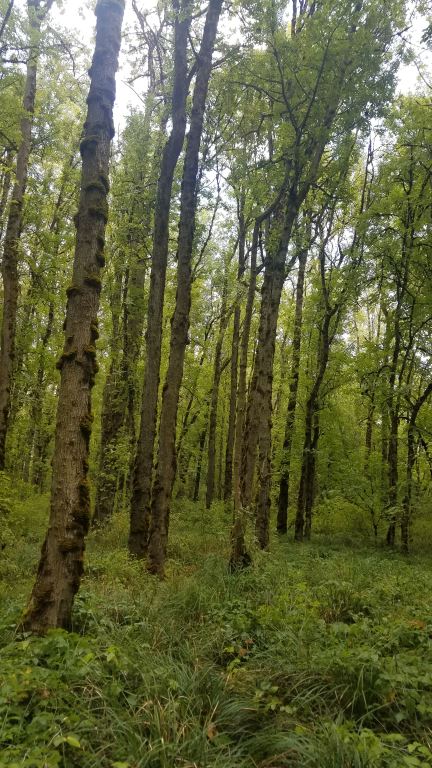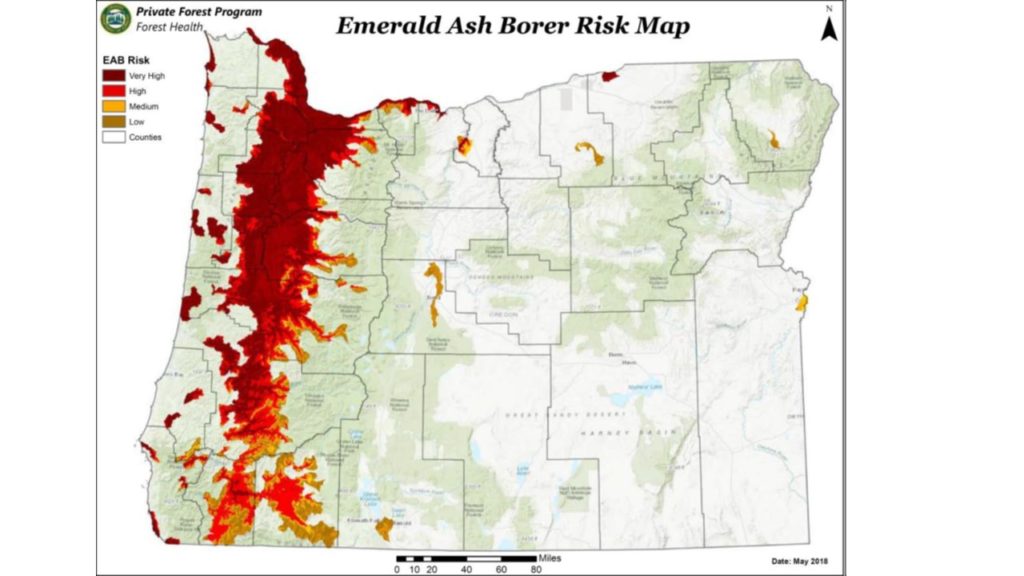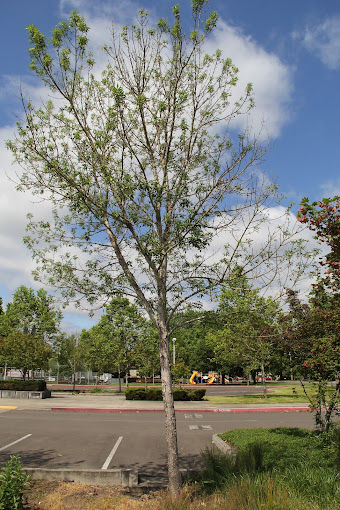
In April 2022 I blogged about efforts on the West Coast to prepare for arrival of the emerald ash borer (EAB).
That blog focused on Oregon ash (Fraxinus latifolia), which is an important component of riparian forests. I alerted you to the availability of ODA/ODF EAB 2018 Response Plan.
I also mentioned Oregon’s active participation in “don’t move firewood” campaigns.
California has long inspected incoming firewood. In 2021 it establishment of a state quarantine in response to APHIS ending the federal quarantine. Washington State operates a statewide trapping program for invasive insects but does not regulate firewood.
Contributions from the Tualatin Soil and Water Conservation District enabled the USDA Forest Service Dorena Genetic Resource Center to begin testing Oregon ash for resistance to EAB and related genetics work. Other funding came from the USFS Forest Health Protection program.
EAB has now been detected in Oregon — in the Willamette Valley! (See photo above, by Wyatt Williams) Concerned stakeholders have established a new newsletter to keep people informed and promote cooperative efforts.
The newsletter is “Ash across the West”.
The first issue of the newsletter provides the following information:
- there are eight ash species in the West; all are vulnerable to the emerald ash borer (EAB)
Single-leaf ash (Fraxinus anomala) CA, NV, AZ, UT, NM, CO, WY
Fragrant ash (Fraxinus cuspidata) NV, AZ, NM, UT
Calif ash (Fraxinus dipetala) CA, NV, AZ, UT
Fresnillo (Fraxinus gooddingii) AZ
Gregg’s ash (Fraxinus greggii) AZ
OR ash (Fraxinus latifolia) WA, OR, CA
Chihuahuan ash (Fraxinus papillosa) AZ, NM, TX
Velvet ash (Fraxinus velutina) CA, NV, AZ, UT, NM, TX

- EAB Risk Map for OR: based upon known occurrences of ash & corresponding human activities associated with known pathways of EAB introduction and establishment.
- 2022 status of the two field trials
- the Dorena Genetic Resource Center (DGRC): planted 600 seedlings from 27 families; 85% survival in 2022; controlling competing vegetation
- Washington State University Puyallup Research Center: planted seedlings from 26 of these families; 95% survival rate. Possible complication from a foliar disease.
- Seedlings from 17 Oregon ash families (including 14 of those in the DGRC field trial) sent to Dr. Jennifer Koch (USFS) in Ohio) for EAB resistance/susceptibility testing.
- Seed collections began in 2019; interrupted by COVID-19 in 2020 but resumed in 2021 and continue in 2022. Several consortia are involved in Oregon and Washington. In California and the other states, The Huntington Botanical Gardens will lead the collecting effort. Funding is from USFS Forest Health Protection. Seeds are stored for gene conservation; some are used for the field trials in Oregon and Washington and the initial EAB-resistance studies going on in Ohio.
- Penn State Ash Genomic Project: Dr. Jill Hamilton is trying to create a ‘genomic passport’ for Oregon ash populations for use in establishing genotype-environment associations to inform seed transfer guidelines. If you would like to help Dr. Hamilton collect leaves for sampling, contact: Dr. Jill Hamilton at jvh6349@psu.edu
To help with seed collection, ash monitoring, documenting the importance of ash to various communities, and other activities; or to get on the mailing list for the newsletter, contact Richard Sniezko at Richard.sniezko@usda.gov
A video explaining the campaign to save Oregon ash is at https://youtu.be/uZmfLrxEA7g
Posted by Faith Campbell
We welcome comments that supplement or correct factual information, suggest new approaches, or promote thoughtful consideration. We post comments that disagree with us — but not those we judge to be not civil or inflammatory.
For a detailed discussion of the policies and practices that have allowed these pests to enter and spread – and that do not promote effective restoration strategies – review the Fading Forests report at http://treeimprovement.utk.edu/FadingForests.htm
or
